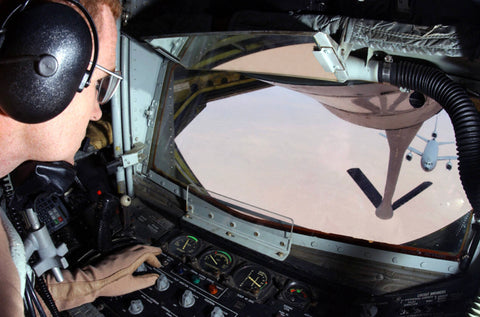
Tense Moments: Aerial refueling from the Boomer’s Perspective
The boom operator, or “boomer,” flies the boom from an airborne tanker into contact with the receiving aircraft, also directing the receiving pilot via signal lights or voice communications. In addition, he gives status reports to the tanker pilot. On the Boeing KC-135 Stratotanker, the boomer lies on a rear-facing pallet during fuel transfers, overlooking the boom through a porthole and controlling the ruddervator via a control panel.
KC-135 boomer Chief Master Sgt. Bruce Garcia has refueled a wide range of aircraft—and coaxed many a nervous pilot through the process. He recalled: “We would do pre-season for the Thunderbirds, and you never said a thing to them; they were rock solid. Other guys were just all over the place.”
A-10 pilots are notorious for following the boom instead of
their instructions sometimes leaving some scrapes and bumps. The results seem
to only enhance the look of the "Warthog." (U.S. Air Force)
In fact, every airplane type has its own refueling idiosyncrasies. As Master Sgt. Garcia pointed out: “Most of the receptacles are behind the cockpit. On the [Fairchild Republic] A-10 [Thunderbolt II], it’s in the nose, which makes it a little dicey because these guys come up and can see the boom. The most notorious for following the boom instead of our instructions are the A-10 pilots, because the boom is right there. As you’d get within 2 to 3 feet and make contact, they would move away from it. So you’d suck the boom back in a couple of feet. Eventually you’d end up saying, ‘Hold your position—I will make the contact.’”
If the boomer or receiving pilot makes a wrong move during an IFR approach or breakoff, it generally results in nothing worse than scratched paint or a few dents. Occasionally, however, a receiving pilot can end up bringing home part of the boom—or being towed back to base behind the tanker. Little wonder, then, that IFR sometimes involves tense moments for pilots and boomers alike.
